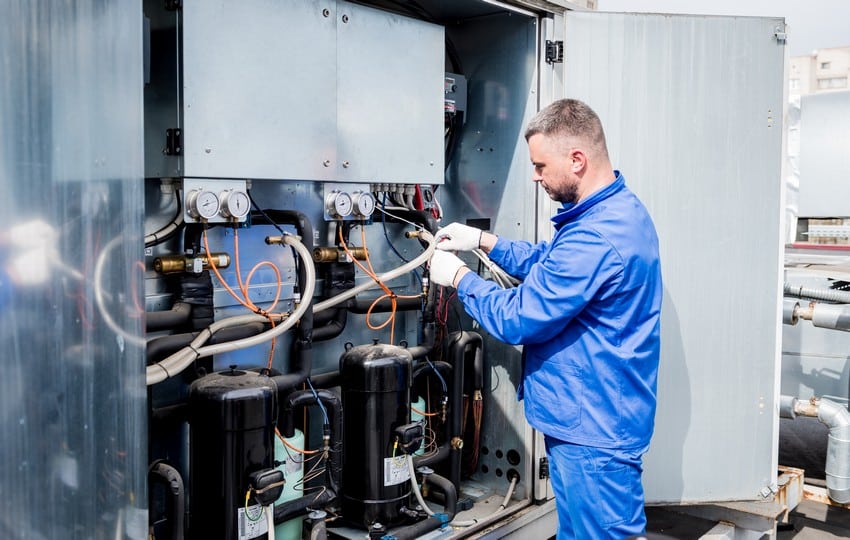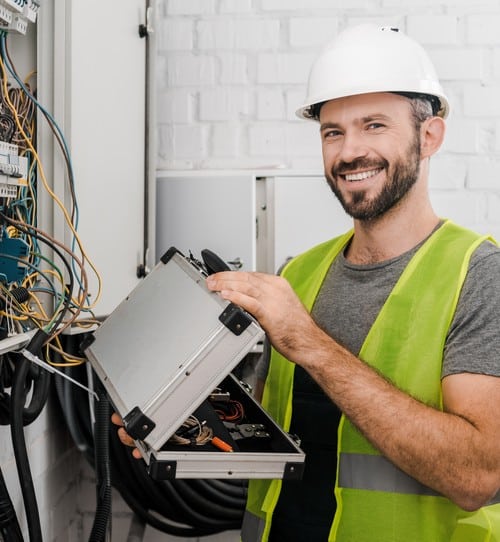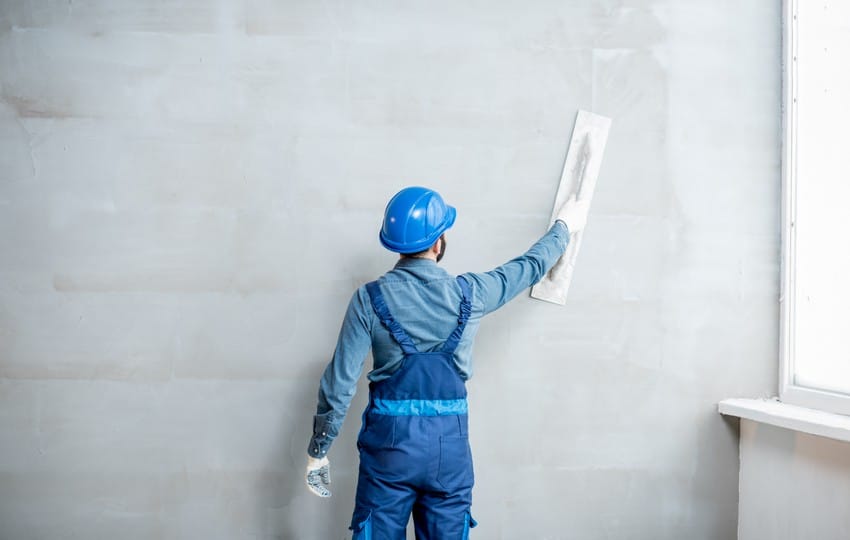Commercial Electrical Maintenance In London
Commercial electrical maintenance safeguards your business, preventing hazards and ensuring operational efficiency. For expert care, contact us today.

Scope of Commercial Electrical Maintenance
Why Choose All Service 4U for Commercial Electrical Maintenance In London

Fast Response
We guarantee a 40-minute response for emergencies, ensuring swift, effective solutions.

No Hidden Costs

Qualified Experts

Free Quotes
- Commercial Carbon Monoxide Detector Installation
- Commercial Electrical Design
- Commercial Electrical Fault Finding
- Commercial Electrical Fusebox Upgrades
- Commercial Electrical Installations
- Commercial Electrical Repair
- Commercial Electrical Rewiring
- Commercial Electrical Safty Inspections
- Commercial Electrical Upgrades
- Commercial Smoke Alarm Installers
- EICR Electrical Installers
About All Service 4U
Since our inception in 2011, All Service 4U has been dedicated to providing top-tier commercial electrical maintenance across London. Our commitment to excellence and customer satisfaction has solidified our reputation in the industry.
- Founded with a vision for excellence
- Rapidly established London market presence
- Core values: Safety, reliability, efficiency
- Mission: Exceeding client expectations
- Continuously adopting latest industry advancements
![]()
Trusted Company
We’re proud to be NICEIC approved, ensuring our services meet the highest standards.
![]()
Experienced
Our team brings years of expertise to every project, big or small.
![]()
Skilled Professionals
We invest in continuous training to stay at the forefront of technology.

Work Guaranteed
Your satisfaction is our priority, with a 6-month guarantee on all repairs.
Accreditations & Certifications
As a Gas Safe, NICEIC Approved Contractor, we’re ISO 9001 and ISO 45001 Certified, reflecting our adherence to industry excellence and safety standards.




Why Certifications Matter in Electrical Maintenance
Choosing a certified electrical maintenance provider is crucial for ensuring the safety and reliability of your commercial property’s electrical systems. Certifications are a testament to a provider’s adherence to industry standards and regulatory compliance, which directly impacts the quality of service you receive.
- Certified providers uphold safety standards
- Quality service linked to proper credentials
- Risks with uncertified services are high

About All Service 4U Core Services
Our core services are designed to meet the diverse needs of London’s commercial sector with efficiency and expertise.
Fault Finding
We specialise in diagnosing and resolving complex electrical issues, ensuring your business operations run smoothly without interruption.
Electrical Works
Our team expertly handles installations and upgrades, utilising the latest technology for optimal electrical performance in your commercial space.
Safety Inspections
We conduct thorough safety checks and inspections to certify that your electrical systems meet all current regulations and standards.
Smart Homes & Networking
Elevate your business with our smart building solutions, integrating advanced networking and automation for enhanced operational efficiency.
Maintenance & Repair
Our maintenance and repair services are comprehensive, addressing any electrical concerns with precision and care to prevent future issues.
EV Charging Points
Supporting green initiatives, we instal EV charging points, contributing to a sustainable future and adding value to your commercial property.
Clients Who Trust Us
Our services are trusted by Dominoes, McDonalds, Costa, and leading FM companies like Adiuvo and Mears Group, reflecting our commitment to excellence.
Worcester Boilers

Glow Worm Boilers

Valliant Boilers

Baxi Boilers

Ideal Boilers

Our Process
Initial Consultation
and Assessment
We begin with a detailed assessment to understand your specific electrical needs.
Customised Planning
and Design
Our plans are tailored, ensuring solutions align with your commercial objectives.
Advanced Diagnostics
and Implementation
We employ the latest technologies for precise diagnostics and efficient implementation.
Ongoing Support and
Optimization
Post-service, we offer continuous support, optimising your electrical systems’ performance.
What Sets All Service 4U Apart
Our unique commitment to safety, advanced diagnostics, and customer-focused service ensures your electrical needs are met with unparalleled expertise and care.
Continuous Support and Maintenance
At All Service 4U, our commitment to you extends beyond the initial service. We offer tailored maintenance plans designed for the long-term care of your commercial electrical systems, ensuring they remain efficient and compliant with the latest standards.
Our rapid response to emergency maintenance needs is a cornerstone of our service. You benefit from peace of mind, knowing that our experts are ready to support your Commercial Electrical Maintenance in London around the clock.
Services Tailored to Your Specific Needs
At All Service 4U, we recognise that every commercial property is unique. We customise our electrical maintenance services to match the specific requirements of your facility, considering factors such as your operational hours, business type, and the complexity of your electrical systems. Our goal is to provide solutions that fit seamlessly into your business operations, minimising disruption and maximising efficiency.
Your feedback is integral to our service adaptation process. We listen to your concerns and preferences, using them to refine our approach and ensure our services align with your expectations. By incorporating your input, we continuously improve and tailor our maintenance strategies to better serve your commercial electrical needs.
Quality of Workmanship
At All Service 4U, our adherence to the ISO 9001 and ISO 45001 standards underpins our commitment to exceptional workmanship. We ensure high-quality service through rigorous training, meticulous project management, and adherence to industry best practices.
Our consistent quality is maintained by regular audits, feedback incorporation, and staying abreast of technological advancements. This dedication not only enhances your operations but also ensures the longevity and safety of your electrical systems.
Your Safety and Security
At All Service 4U, your safety and security are paramount in our electrical maintenance services. We rigorously follow safety protocols, including the Health & Safety at Work Act and Electricity at Work Regulations, to protect you and your property. Our team is trained to identify and mitigate risks, ensuring a secure environment during and after our work.
We stay current with the latest safety standards and regulations through continuous professional development. Educating you on electrical safety is part of our service, empowering you to make informed decisions about your commercial property’s electrical needs. Your well-being is the core of our operations.

Call Today If You Have Any Problems
Please Call To Book A Plumber – Free No Obligation Quote with no hidden fees. We are professional and friendly.
Residential & Commercial Services
At All Service 4U, we tailor our approach to meet the distinct needs of commercial clients, differentiating from residential services with specialised expertise.
- Commercial sites require robust solutions
- We navigate complex commercial challenges.
- Strategies are adapted for business needs
- Commercial clients benefit from specialised focus

Sectors We Work In
At All Service 4U, we cater to a diverse range of sectors within London’s commercial landscape, offering specialised solutions tailored to each industry’s unique electrical needs.
Healthcare
Our services ensure that healthcare facilities maintain critical electrical systems for patient care.
Industrial
Our industrial solutions support the heavy-duty electrical demands of manufacturing plants.
Public Buildings
We provide maintenance for public buildings, focusing on safety and regulatory compliance.
Qualified & Insured
Our technicians are NICEIC approved, ensuring your Commercial Electrical Maintenance in London meets rigorous standards.
Our comprehensive insurance coverage and stringent qualifications provide you with assurance in our electrical services. Continuous professional development keeps our team at the forefront, enhancing our expertise and your confidence in our work. Trust in our professional guarantee for a secure and compliant electrical infrastructure.

What clients are saying…
Super prompt service. Not taking financial advantage of an absent landlord. Kept being updated on what was going on and when. Was briefed by the engineer after the problem was fixed. Engineer was professional, friendly and prompt. Great value. Hig...
Thomas who came out was honest, helpful - set my expectations and above all - did a fantastic job. What an easy service to use and would recommend. Told me the price upfront as well so no hidden surprises.
Had someone available to sort the lock out within the timeframe specified and the price was notified up front, the locksmith texted to confirm appointment and arrived when he said he would after confirming our address. Problem was solved in a reas...
Our boiler stopped working, leaving us without heat and hot water. We reached out to All Service 4 UK, and they sent Kai, an engineer, who arrived promptly. Kai was professional and friendly, quickly diagnosing, explaining each step of the process...
Locksmith came out within half an hour of inquiry. Took less than a 5 mins getting us back in. Great service & allot cheaper than a few other places I called.
Had a plumber come out yesterday to fix temperature bar but couldn’t be done so came back out today to install a new one after re-reporting was fast and effective service got the issue fixed happy with the work that was done over the last few da...
Great customer service. The plumber came within 2 hours of me calling. The plumber Marcus had a very hard working temperament and did his upmost to help and find the route of the problem by carrying out all the checks. I really rated him. Wish the...
Called out plumber as noticed water draining from exterior waste pipe. Plumber came along to carry out checks to ascertain if there was a problem. It was found that water tank was malfunctioning and expelling excess water into drains rather than s...
We used this service to get into the house when we locked ourselves out. Very timely, polite and had us back in our house all within half hour of phoning them. Very reasonable priced too. I recommend if you have locksmith services required.
Renato the electrician was very patient polite quick to do the work and went above and beyond. He was attentive to our needs and took care of everything right away.
Very prompt service, was visited within an hour of calling and was back in my house within 5 minutes of the guy arriving. He was upfront about any possible damage, of which there was none. Very happy with my experience and would definitely recomme...
We are extremely happy with the service provided. Communication was good at all times and our electrician did a 5 star job. He was fair and very honest, and did a brilliant job. Highly recommend Pawel
Came on time, a very happy chapie called before to give an ETA and was very efficient. Kitchen taps where changed without to much drama. Thank you
Excellent service ! Lock smith there in 15 minutes and was able to gain access to my house and change the barrel with new keys.
Highly recommend this service 10/10
Thank you very much for your service when I needed it , I was locked out of the house with 2 young children in not very nice weather , took a little longer than originally said to get to us but still quick service at a reasonable cost , would reco...
The gentleman arrived promptly and was very professional explaining what he was going to do. He managed to get me back into my home in no time at all. I would recommend the service highly
Amazing service, answered the phone straight away, locksmith arrived in an hour as stated on the phone. He was polite and professional and managed to sort the issue within minutes and quoted a very reasonable price with no hidden extras.
Really pleased with the service ... I was expecting to get my locks smashed in but was met with a professional who carried out the re-entry with no fuss, great speed and reasonable price.
Called for a repair went out same day - job sorted with no hassle. Friendly, efficient and knowledgeable. Will use again if required in the future.
Even after 8pm Alex arrived within half an hour. He was very polite, explained his reasons for trying different attempts, took my preferences into account and put me at my ease at a rather stressful time.
The plumber arrived on time, was very friendly and fixed the problem quickly. Booking the appointment was very efficient and a plumber visited next day
Our Guarantee
- Full-Service Team
- Ongoing Customer Support
- 6 Months Workmanship Guarantee
- Full Manufacturer Warranty
- Qualified & Certified
- Prompt Arrival Pledge
- All rooms left as they were found
- Honest and transparent pricing
- 24/7 Emergency Assistance
- Rectify Issues: No Cost
We Make It Easy

Book An Appointment
Contact us to schedule your service; we’ll handle the details for a seamless experience.
We’re On Our Way
Our team arrives promptly, equipped to deliver efficient, hassle-free maintenance.
Everything Explained
We communicate clearly, ensuring you understand every step of the maintenance process.
Standard Rates (per hour)
| Rates | Mon-Fri 7am-6pm | Mon-Fri 6pm-12am | Saturday 7am-6pm | Saturday 6pm-12am | Sunday 7am-6pm | Sunday 6pm-12am | Mon-Sun 12am-7am |
| Appliances | £99.00 | £149.99 | £149.99 | £149.99 | £149.99 | £149.99 | £199.00 |
| Fridge/Freezers | £99.00 | £149.99 | £149.99 | £149.99 | £149.99 | £149.99 | £199.00 |
| Plumbing | £99.00 | £149.99 | £149.99 | £149.99 | £149.99 | £149.99 | £199.00 |
| Electrics | £99.00 | £149.99 | £149.99 | £149.99 | £149.99 | £149.99 | £199.00 |
| Heating & Gas Work | £99.00 | £149.99 | £149.99 | £149.99 | £149.99 | £149.99 | £199.00 |
| Drain Jetting & CCTV | £164.99 | £194.99 | £194.99 | £194.99 | £194.99 | £194.99 | £219.00 |
| Boiler Service | £99.00 | £164.99* | £164.99* | — | £164.99 | — | — |
| Gas Safety Certificate | £99.00 | £164.99* | £164.99* | — | £164.99 | — | — |
| Locksmith lock change labour | £59 | £69 | £69 | £69 | £69 | £69 | £69 |
Equipment & Materials
Selection Criteria for High-Quality Materials
At All Service 4U, we meticulously select the highest quality materials for your electrical maintenance needs..
Commitment to Excellence
Our commitment to quality ensures we use only the best equipment and materials, enhancing the longevity and reliability of your electrical systems.
- Premium-grade wiring and components
- Advanced diagnostic tools for accuracy
- Energy-efficient fixtures for savings
- Durable materials for long-term use
- Smart devices for modern solutions
- Industry-standard safety equipment
- Up-to-date technology for efficiency
- Eco-friendly options for sustainability
- Certified products for compliance assurance
- {SEGMENT-16-CONTENT-1-LIST-10}
Role of Technology in Service Delivery
Incorporating cutting-edge technology, we deliver efficient and precise electrical maintenance services, ensuring optimal outcomes for your business.
Project Timeframes
At All Service 4U, we prioritise efficient service delivery, ensuring your commercial electrical maintenance is completed within agreed-upon timeframes.
Ensuring Timely Completion
We commit to timely project completion, respecting your schedule and business continuity.
Minimising Disruption
- Strategic planning minimises operational disruptions.
- Efficient workflows ensure swift service delivery.
- Clear communication keeps you informed.
Project Updates
We provide regular updates, ensuring you’re always informed about the progress of your electrical maintenance project. Our proactive approach to communication includes detailed reports and direct contact, allowing for transparency and peace of mind throughout the service period.

Get a FREE Quotation
Please Call To Book A Property Maintenance Expert – Free No Obligation Quote with no hidden fees. We are professional and friendly.
Industry Leading Customer Services
Reliable
Our team’s expertise ensures dependable electrical maintenance for your business.
Responsive
We prioritise your concerns, offering swift solutions to your electrical needs.
Proactive
Continual training keeps us ahead, providing you with advanced service.
Seamless Experience
From initial contact to project completion, we guarantee a smooth journey with All Service 4U.
- Regular updates maintain transparency.
- Feedback is actively sought and valued.
- Solutions are tailored to your requirements.
- Your satisfaction is our primary goal.

Frequently Asked Questions
Explore our FAQ section for insights and guidance on commercial electrical maintenance.
What Are the Electrical Compliance Requirements for Commercial Properties in London?
Navigating the complex landscape of electrical regulations is crucial for commercial property owners in London. Ensuring compliance not only adheres to legal standards but also guarantees the safety and efficiency of your electrical systems. As a property or business owner, you’re responsible for understanding and following these regulations to avoid penalties and ensure a safe environment for employees and customers.
How Does Compliance Impact Commercial Electrical Maintenance?
Compliance with electrical regulations affects every aspect of commercial electrical maintenance. From the design and installation of electrical systems to their ongoing maintenance and inspection, each step must align with the latest standards and best practices. This includes adherence to the Health & Safety at Work Act (1974), Electricity at Work Regulations (1989), and the latest wiring regulations known as BS 7671:2018+AMD 1:2020.
Ensuring Your Electrical Systems Meet Legal Standards
We take the responsibility of ensuring your electrical systems meet all legal standards seriously. Our team stays informed about the latest updates in electrical regulations and implements them in every project. This proactive approach minimises the risk of non-compliance and the associated legal repercussions for your business.
Assistance with Regulatory Navigation
Understanding the implications of these regulations can be daunting. We assist you in navigating these requirements, providing clear explanations and actionable advice. Our expertise ensures that your electrical maintenance and installations are not only compliant but optimised for safety and performance.
Commitment to Regulatory Excellence
Our commitment to excellence extends to our rigorous compliance with electrical regulations. We provide documentation and certifications as required, giving you the confidence that your commercial property’s electrical systems are legally compliant and professionally maintained. Trust us to handle the complexities of regulation, so you can focus on running your business with peace of mind.
How Can Energy Efficiency Be Enhanced Through Electrical Maintenance?
Energy efficiency is a cornerstone of modern electrical maintenance, and as a property or business owner, you may wonder how it can be integrated into your commercial property’s electrical care. At our company, we prioritise energy-efficient solutions that not only reduce your operational costs but also contribute to your sustainability goals.
Our approach to incorporating energy efficiency into maintenance services begins with a thorough evaluation of your current electrical systems. We assess areas where energy usage can be optimised, such as lighting, heating, and cooling systems, and recommend upgrades to more efficient technologies like LED lighting or programmable thermostats.
Benefits of Energy-Efficient Electrical Systems
- Reduced Energy Bills: By implementing energy-saving measures, you can significantly lower your monthly utility costs.
- Environmental Impact: Energy-efficient solutions contribute to a reduction in your carbon footprint.
- Enhanced System Performance: Modern, energy-efficient systems often come with improved functionality and reliability.
- Long-Term Savings: While the initial investment may be higher, the long-term savings on energy bills and maintenance costs are substantial.
Evaluating and Recommending Energy-Saving Measures
- Energy Audits: We conduct detailed energy audits to identify inefficiencies and potential improvements.
- Customised Solutions: Based on the audit results, we tailor recommendations to fit your specific needs and budget.
- Latest Technologies: We stay informed about the latest energy-efficient technologies and practices to provide you with the best options.
Impact on Operational Costs and Sustainability
- Operational Efficiency: Energy-efficient systems often require less maintenance and have a longer lifespan, reducing overall operational costs.
- Sustainability Goals: By reducing energy consumption, you’re taking active steps towards achieving your sustainability objectives, which can enhance your company’s image and marketability.
By choosing to focus on energy efficiency in your commercial electrical maintenance, you’re investing in the future of your business and the planet. If you’re ready to explore how energy-efficient solutions can benefit your property, contact us to learn more about our services and how we can assist you in achieving your energy goals.
What Constitutes an Electrical Emergency for Commercial Properties?
When you’re faced with a sudden electrical fault or power outage, it’s crucial to have a reliable partner who can respond swiftly and effectively. Electrical emergencies can range from loss of power and lighting to more serious issues like electrical fires or equipment failures that can halt your business operations.
In the event of such emergencies, we at All Service 4U are prepared to provide rapid assistance to commercial clients. Our emergency services are structured to ensure a quick and effective resolution, with a guaranteed on-site presence within 40 minutes in the London area. This prompt response is part of our commitment to minimising downtime and ensuring the safety and continuity of your business.
How Do We Ensure a Rapid and Effective Response?
- 24/7 Availability: Our emergency team is available around the clock, every day of the year, to respond to your calls.
- Fast Mobilisation: We aim to be on-site within 40 minutes, equipped with the necessary tools and parts to address the emergency.
- Skilled Technicians: Our electricians are highly trained to diagnose and resolve complex electrical issues promptly.
Preventative Measures for Future Emergencies
- Regular Inspections: We conduct thorough inspections and safety checks to identify potential risks before they become emergencies.
- Maintenance Plans: Our preventative maintenance plans are designed to keep your electrical systems in optimal condition, reducing the likelihood of future emergencies.
- Up-to-Date Systems: We recommend and implement upgrades to ensure your electrical systems meet the latest safety standards and technological advancements.
By taking proactive steps and offering a rapid response, we help protect your commercial property from the consequences of electrical emergencies. If you’re in need of emergency electrical services or wish to discuss preventative measures, please don’t hesitate to contact us. Our team is ready to provide the support and expertise you need to maintain a safe and functional commercial environment.
Why Are Regular Electrical Inspections Necessary for Your Commercial Property?
Regular electrical inspections are a critical component of maintaining the safety and efficiency of your commercial property’s electrical systems. These inspections help to identify potential issues before they escalate into costly repairs or dangerous situations.
How Comprehensive Electrical Inspections Are Conducted
We conduct thorough inspections that cover every aspect of your property’s electrical system. This includes checking for any signs of wear and tear, ensuring all components meet current safety standards, and verifying that your system is capable of handling your property’s electrical load demands.
- Visual Assessments: Our technicians visually examine fixtures, wiring, and panels for any apparent issues.
- Testing: We perform various tests to assess the functionality and safety of your electrical systems.
- Documentation: Detailed records of inspections are kept, highlighting any areas that require attention.
Benefits of Proactive Electrical Maintenance
Proactive maintenance, including regular inspections, offers numerous benefits:
- Prevention of Major Repairs: Early detection of issues can prevent larger, more expensive problems down the line.
- Safety: Regular inspections reduce the risk of electrical fires and other hazards.
- Compliance: We ensure your systems comply with the latest regulations, avoiding potential fines.
- Efficiency: Well-maintained systems operate more efficiently, potentially lowering energy costs.
The Role of Inspections in Safety and Efficiency
Regular inspections contribute significantly to the overall safety and efficiency of your commercial property:
- Safety Enhancements: By identifying and rectifying potential hazards, we help create a safer environment for your employees and customers.
- Operational Efficiency: Inspections ensure that your electrical systems are running optimally, which can improve the performance of your business operations.
For property and business owners, understanding the importance of electrical inspections is key to maintaining a safe and efficient commercial space. If you’re looking to schedule an inspection or have questions about your electrical maintenance needs, please contact us to learn more about our services.
How Is Electrical Maintenance Customised for Different Commercial Properties?
Understanding that each business has unique electrical needs, we at All Service 4U take a personalised approach to our commercial electrical maintenance plans. When developing a maintenance plan, we consider several factors to ensure that it aligns perfectly with your business requirements.
Factors Considered in Maintenance Planning
- Business Operations: We assess the nature of your business operations to understand the electrical demands and ensure minimal disruption.
- Property Size and Complexity: The size and complexity of your property guide us in determining the scope of maintenance required.
- Electrical System Age: Older systems may require more frequent checks or specific care.
- Regulatory Compliance: We ensure that your maintenance plan keeps you compliant with all current electrical regulations.
- Energy Efficiency Goals: If reducing your carbon footprint is a goal, we incorporate energy-efficient practices into your plan.
Benefits of a Customised Maintenance Plan
A tailored maintenance plan offers several benefits:
- Preventative Care: Custom plans allow for proactive maintenance, reducing the likelihood of unexpected breakdowns.
- Cost Savings: Regular maintenance can lead to cost savings by avoiding large-scale repairs and improving energy efficiency.
- Longevity: Properly maintained systems have a longer lifespan, providing better return on investment.
- Safety: Custom plans ensure that all potential safety hazards are addressed, keeping your property and its occupants safe.
Flexibility for Changing Business Needs
We understand that business needs can change over time. Our maintenance plans are designed with flexibility in mind, allowing for adjustments as your business evolves. Whether it’s scaling up operations, incorporating new technology, or adjusting to new safety standards, we’re ready to adapt our services to meet your changing needs.
For property and business owners looking to ensure their commercial spaces are maintained to the highest standard, our tailored electrical maintenance plans are the solution. Contact us to discuss how we can design a maintenance plan that fits your specific business needs.
How Are Electrical Maintenance Services Evolving with Technology?
In the dynamic field of commercial electrical maintenance, staying informed about the latest technological advancements is crucial for property and business owners. As your dedicated electrical service provider, we continuously integrate cutting-edge technologies and innovative practices to enhance the safety and efficiency of your electrical systems.
Embracing Technological Advancements
We are committed to staying at the forefront of electrical maintenance technologies. Our team actively pursues ongoing education and training to master new tools and methodologies. This dedication ensures that we are equipped to handle the latest industry trends and provide you with state-of-the-art electrical solutions.
- Smart Technology Integration: We incorporate IoT devices and smart controls to optimise energy usage and system monitoring.
- Renewable Energy Systems: Our services include the installation and maintenance of solar panels and other renewable energy sources.
- Advanced Diagnostics: Utilising thermal imaging and other diagnostic tools, we can detect issues before they escalate.
Preparing for Future Trends
The future of electrical maintenance is shaped by sustainability and smart technology. We help you navigate these trends by:
- Energy Efficiency: Recommending upgrades that reduce energy consumption and costs.
- Automation: Implementing automated systems for enhanced control and convenience.
- Safety Innovations: Introducing devices that improve the safety of your electrical infrastructure.
Incorporating Innovations into Services
Our approach to incorporating innovations is centred around enhancing your electrical systems’ safety and operational efficiency. We evaluate new technologies for their potential benefits to your business and integrate them seamlessly into our service offerings.
- Customised Upgrades: Tailoring upgrades to align with your specific business needs.
- Proactive Solutions: Anticipating future maintenance requirements and preparing accordingly.
- Continuous Improvement: Regularly updating our practices to reflect the latest industry standards.
By partnering with us, you ensure that your commercial property’s electrical maintenance is not only current but also future-ready. If you’re interested in learning more about how technological upgrades can benefit your business, please contact us to discuss your options.
We provide other services like
Case Studies
Areas We Cover
- Barking and Dagenham
- Barnet
- Bexley
- Brent
- Bromley
- Camden
- Croydon
- Ealing
- Enfield
- Greenwich
- Hackney
- Hammersmith and Fulham
- Haringey
- Harrow
- Havering
- Hillingdon
- Hounslow
- Islington
- Kensington and Chelsea
- Kingston upon Thames
- Lambeth
- Lewisham
- Merton
- Newham
- Redbridge
- Richmond upon Thames
- Southwark
- Sutton
- Tower Hamlets
- Waltham Forest
- Wandsworth
- Westminster








